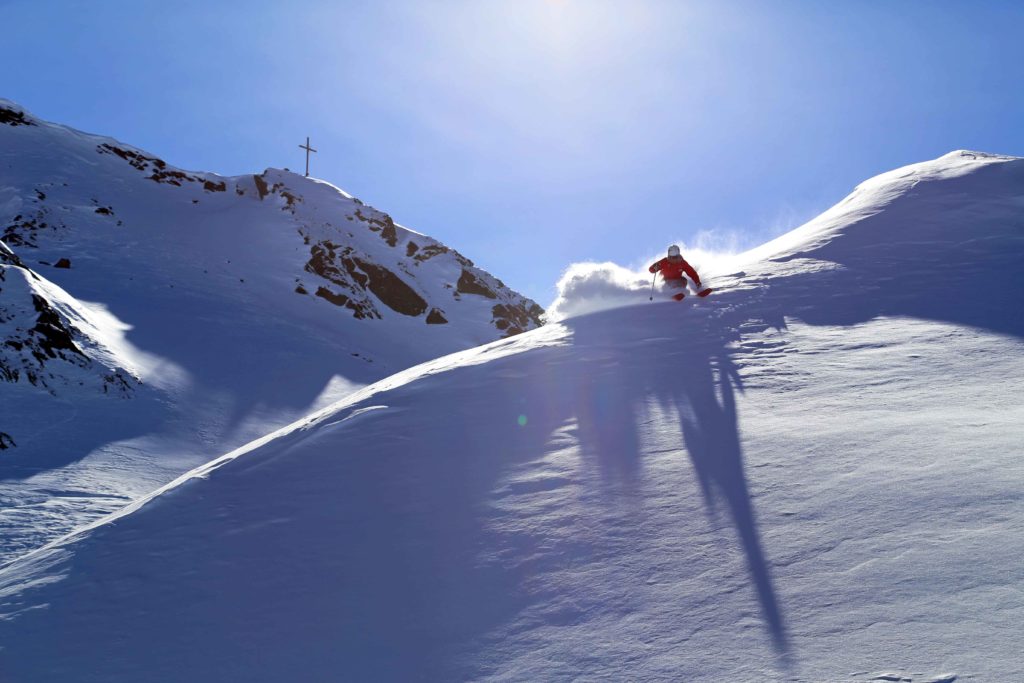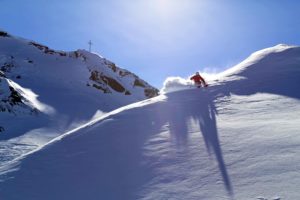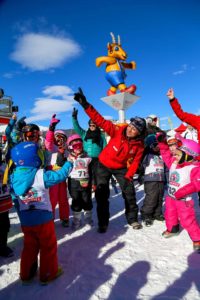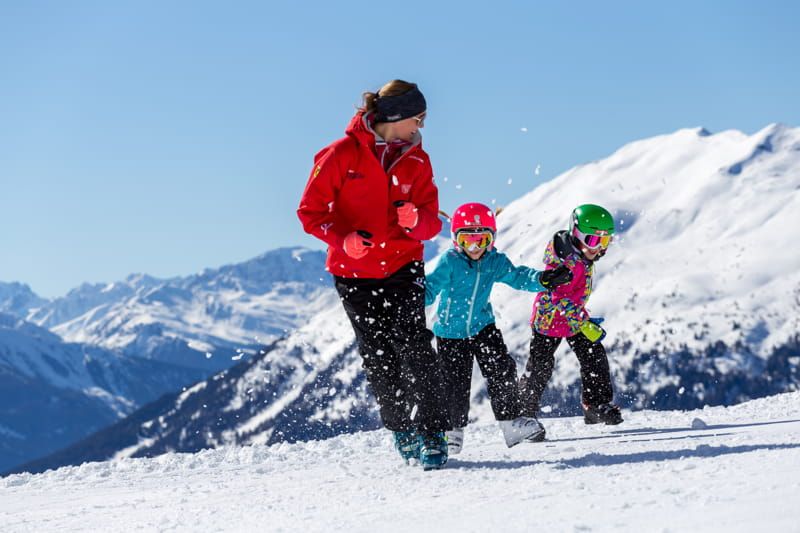4 different snow conditions and their characteristics, from ice to powder – anyhow skiing is really attractive
The different snow conditions show the versatility of skiing. Whether it’s deep snow, ice, or brackish snow, each type of snow brings its challenges and unique charms.
In this article, we provide valuable tips on how to get the most out of a day of skiing in a variety of snow conditions.

1. Deep snow – the paradise of free-riders
Deep snow is the absolute dream of many skiers. Untouched slopes and a feeling of freedom make skiing in deep snow a very special experience. It is necessary to use the right technique for freeriding and choose the best line. The equipment can be very helpful. With „fat boys“ (really bride skies) you get more lift avoiding sinking into the snow.
For freeriding you use flowing, wide turns and a higher speed. The Freeriders also jump over rocks and snow hills for the perfect line.
The difference between freeriding and classic deep snow skiing is the speed and the length of the turns. The classic skiers are slower and use short turns. After their descent, they leave a beautiful visible track in the snow.
2. Ice – a challenge even for advanced skiers
Icy slopes are a challenge, especially for less experienced skiers. On icy slopes, the ski gets less grip and slides away.
A high torsion of the skis has a positive effect on getting more grip with the edges on the ice. Nevertheless, you also need the right ski technique. With sharp edges, equal-weighted skis and the correct body position, you should be able to minimize sliding away.
To make short and precise turns the ski poles are a helpful tool for balance and rhythm.
Skiing on icy slopes requires experience. You should take enough time to improve your ski technique and gradually get used to the challenging conditions. After some time and training, you will become more confident and skiing on ice will become easier.
3. Firn snow – enjoy the spring snow
Firn snow occurs when the snow freezes at night and melts during the day because of the pleasant temperature of springtime.
This type of snow is wet and soft. An all-mountain ski with a medium width is an excellent choice for skiing on Firn snow. You get more lift on the snow, because of the width of the skis (similar to deep snow skiing).
It’s wonderful when you make long, dynamic turns on the soft slope and feel the warmth of the spring sun on your skin.
With the warming of the day, the firn snow is getting wetter and heavier. This makes skiing more exhausting and skiing is more challenging. In order not to injure yourself, you should take frequent breaks, especially in the afternoon, and stop when you get tired and can no longer concentrate on skiing.
4. Combination of snow conditions
Snow conditions often change during the day. For example, in the morning there may be powder snow, but later the slopes become icy or slushy. Therefore, it is important to be able to quickly adjust to the changing conditions. Good flexibility and adaptability are the keys to skiing safely in changing conditions.
Conclusion – From ice to powder
Skiing is an exciting and rewarding experience in any snow condition. Each type of snow offers unique challenges and requires different techniques and equipment. With the right knowledge and a flexible approach, you can get the most out of a day of skiing in any snow condition – From ice to powder. See you at Hochzeiger-Pitztal!












